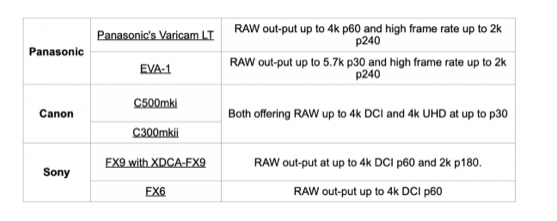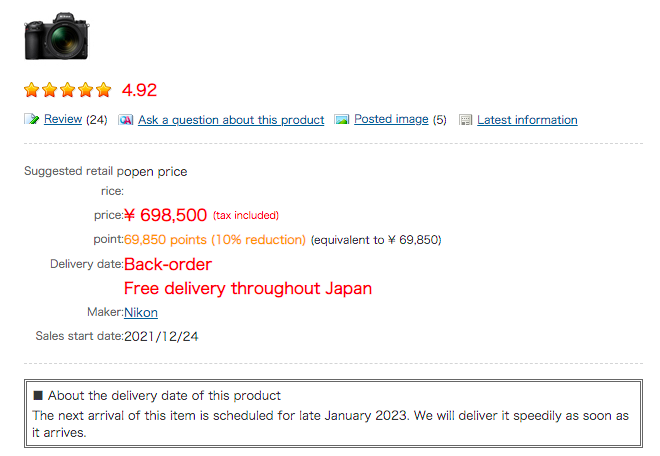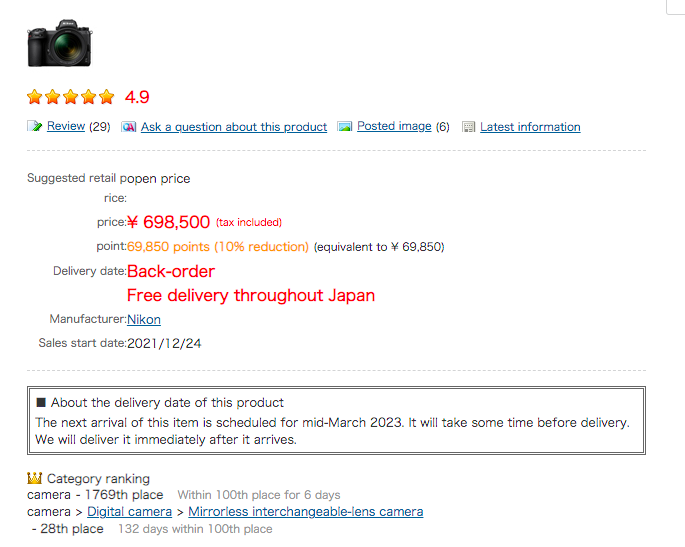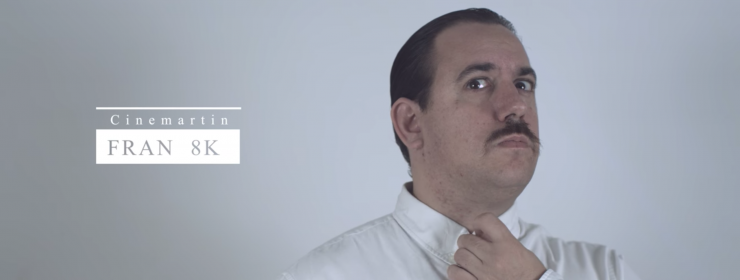-
Posts
5,964 -
Joined
-
Last visited
Content Type
Profiles
Forums
Articles
Everything posted by BTM_Pix
-
I've got a bunch of Samsung T5/T7 drives for the Fp and Pocket cameras and, as small as they are, they are still a bit cumbersome and in the case of the T5s I've had a couple fail on me. This is not exactly a unique or challenging DIY project to make my own alternative to the T5/T7s but thought it might be useful for anyone looking for something similar that is both faster and, for my purposes, a bit more ergonomic. Enter the Sabrent NVMe enclosure and the WD SN770 NVMe drive. The Sabrent takes both SATA and NVME in sizes 2242/2260/2280 and is tool-free so you just pop it open and then insert the drive. Once you've done that, simply snap the case shut again and you have a ready to go drive which, for me at least, is a far better form factor than a T5/T7 for mounting on a camera and is easily swappable in the field for another NVMe if you run out of space. To be able to mount it to a camera, I decided that the most appropriate and versatile route would be via a standard 1/4" 20 thread so I designed and resin printed an adapter that will take a screw and which is then bonded to the bottom of the drive case. With that in place it can now be mounted to the camera cage horizontally or in the case of the Pocket cameras, directly into the thread on the top of the camera. For my own use, I much prefer mounting it in this orientation but, of course, with it now having the 1/4" 20 mount it can be mounted anywhere. In terms of price, the 1tb drive and the housing came to around €125 so it is certainly very competitively prices compared to the Samsungs. Oh and there is the small matter of the quoted write speed being 5,150MB/s which makes it significantly faster than even the gen2 T7's speed of 1,000 MB/s. In terms of actual real world performance, I shot all day with it on the P4K earlier in the week at 5:1 BRAW and it didn't miss a beat. As I say, not unique, not challenging and not for everyone but it fills a need for me. Some better cable/cable management required now though.
-
The Sony doesn’t record though, let alone in ProRes or ProResRAW It can monitor and stream but in that respect it’s no different to adding a $10 HDMI converter to any Android phone. As opposed to it needing a $2400 one. Even if the iPhone had an input (which Apple have zero interest in adding as they want people to buy them as cameras) it has fixed (expensive) internal storage which makes it impractical as a recorder. Again, that’s before the other stuff that something like a Ninja gives you such as audio input, expansion for timecode and SDI etc Even if Apple did decide to add all that, the financials wouldn’t add up either when you can get a Ninja V now for $399 and the 8K capable V+ for $599 as opposed to the $1500-$2000 that a theoretical iPhone with the same capability would be. The threat that phones present to camera manufacturers will actually indirectly cause phones to be responsible for the demise of products like the Ninja V though. Not by replacing them like for like but by forcing camera manufacturers to include internal ProRes to compete with phones and therefore make the external recorder redundant by default.
-
There is a lot more going on with the Atomos with regard to the custom FPGA that does the processing, HDMI input/Output interface, audio interface, SSD interface, expansion interface etc that requires not only additional space but additional power and heatsink/cooling solution that wouldn't make it practical to use the same form factor as your iPhone. The reality is that it would be far easier to turn the Ninja V into a smartphone than the other way round. However....when it comes to the screen part of the equation, this is an amusing/infuriating story regarding Atomos and smartphones from the original Ninja where the screen they used was actually a concealed off the shelf HTC phone screen and its housing. INCLUDING the logo and phone buttons ! https://themagicalworldofsakie.wordpress.com/2018/06/19/atomos-ninja-screen-replacement-rant/
-
Nice shots but..... Title of video : I Got Arrested in Rome - What Every EU Drone Pilot Needs to Know before flying 1st line of description : I Want to tell you my story on how I got almost arrested in Rome twice even with a drone permit. Join us next week for my video "I Got Arrested in Madrid" where I detail precisely how I absolutely, positively didn't get arrested in Madrid either. The stupid thing about the shamelessly clickbait title is that it is actually an informative video that didn't require it.
-
Yeah, for me at least, the lighting anomaly really took away from the gravitas of the scene itself as this was the moment in the narrative where Mr. Taggart fully realised the extent of the indiscipline amongst his charges that would ultimately undermine his goal of driving the citizens of Rock Ridge away from their homes. In fact, Mel Brook's original reference for the scene was "Fractious Actions Rattle Taggart" which was abbreviated and became the erroneous name by which the scene is now widely referred to.
-
Certainly if Mel Brooks had had access to the Alexa 35 he might have lit scene this in a moodier way.
-
Ah that makes sense then. I last looked at the price of it about six months ago when I was flirting with the idea of getting a used R5. I'm surprised it has dropped that far that fast so, yeah, I wouldn't be amused about it either. For the particular niche that I was looking at - the R5 - it obviously makes sense but, yeah, the regular version suffices in general.
-
You would think so as it certainly bucks the trend of price rises ! I'd imagine that the V+ at that price is now a very attractive option for R5 users. For owners of cameras that can do RAW over SDI, the $898 package of V+/SDI Expansion/Activation is now also a great option. Not sure if they have expanded this list of compatible cameras that can use it but this was it at launch.
-
I’m not sure that this is being repeated at other retailers or for how long this offer is on but B&H have dropped the price of the Ninja V to $399 and the V+ to $599. https://www.bhphotovideo.com/c/product/1637656-REG/atomos_atomnjvpl1_ninja_v_5_8k.html https://www.bhphotovideo.com/c/product/1401565-REG/atomos_atomnjav01_ninja_v_5_4k.html
-
The SteadXP has been around for several years and does exactly this. Great results but I think people have been reticent about it because it requires a separate app to process the footage rather than being a plug in as well as being put off by having to shoot at a higher shutter speed for best results.
-
I think the option to take the EVF is a big advantage for the G2 over the original 6K but the internal ND would definitely push me over the edge to spring the extra for the 6K Pro. Purely speculative but it hints at it being a way to get around a component supply issue for the original or economy of scale to not keep two separate bodies for the 6K.
-
Tilt screen and higher capacity NP-F battery. I had been pondering taking the financial hit and trading my 6K in for the Pro so this will make the hit bigger! I thought the next one they would bring out would be the 4K Pro (or even the 6K with an MFT mount) so this seems a bit meh to me and I’m not sure why anyone looking at the 6K wouldn’t just stretch to the 6K Pro. More details here https://www.blackmagicdesign.com/products/blackmagicpocketcinemacamera
-
Well if the price of shit is going up that much then the stuff that comes out of Boris Johnson’s mouth might actually have some value for once.
-
Well, the scheduled arrival for the next batch is now not going to be January 2023. Its March 2023. At this rate they won't have to worry about infringing RED's patent as it will have expired before they ship them.
-
Go to the DPReview studio shot comparison page, select those (or any) cameras at those (or any) ISOs, download the files and make your own mind up.
-
You don't have to hand over €1400 to shoot raw on a phone would be the difference. There may well be value in it on a €300 phone but when you are having to hand over €1400 to do it then the proposition changes completely.
-
Again, its not the title of the video though is it? It is you that has titled the thread as it being a masterclass and that is what was being responded to. The reality is that the actual video you have put up is asking if the phone is a masterpiece. "Sony Xperia 1IV - A Masterclass in Filmmaking" and "Sony Xperia 1 IV - A Filmmaking Masterpiece?" are very different things. Although, the answer to the statement in the thread title and the question posed in the actual video are both "absolutely not" in my opinion.
-
For what its worth, I completely agree with @PannySVHS point about alternative ways to use the expenditure than on that particular phone. It is €1400 and that amount could be used in many different ways to acquire film making equipment and still leave enough over to buy a perfectly functioning phone. Again, thats not ego, its just counting.
-
It is literally not a "Masterclass" though is it ? Not even the creator of it is claiming it as such. So saying it isn't a "Masterclass" is nothing to do with ego, its just about reading the actual title of the video that you linked. "Sony Xperia 1 IV - A Filmmaking Masterpiece?"
-
When RED announced at the NAB in 2006 that they were taking orders for a 4K cinema camera that shot visually lossless compressed RAW at 24fps+ internally to CF cards or connected HDs, I don't recall the reaction being "Oh really, another one? How many does that make of these types of camera now?". It got the reaction (and the blind faith pre-orders) that it did because it was unique. In point of fact, it was so disruptive that the late cinematographer Geoff Boyle got into a long running feud with Jim Jannard after an argument at NAB about it being a scam. https://www.hollywoodreporter.com/movies/movie-news/reds-jim-jannard-continues-feud-609701/ Anyway, you can argue until 2028 about whether that means it was deserving of such a broad patent but its after Apple and Sony failed it is clearly not going anywhere so until then, if you want compressed RAW in camera, then we can either howl at the moon about it, hope someone successfully challenges it or buy one of their cameras. People forget that another factor that was in play that made the original RED ONE such a big deal was that the compression got around one big issue of the time which was the storage costs for RAW video. When it actually shipped, even generic CF cards were around $8 per gig whereas today an NVME works out at around $0.10 per gig. On that basis, as well as the huge uptick in computer power, shouldn't we be looking at manufacturers to take the path that Sigma have and got round it by using CinemaDNG anyway instead of waiting another six years for the patent to expire ?
-
The best I could offer you is controlling the wheel on the Fotodiox version 😉 Did Tilta ever release their version ?
-
Multiples of 50 will work. On white tiles lit with Philips HUE Led strips, there is banding at 1/80th, 1/160th, 1/320th, 1/160th etc but it is not there at 1/100th, 1/200th, 1/250th, 1/500th. The exception is 1/400th where it is a multiple of 50 but banding is visible.
-
Did you upgrade to 2.00 from the dinosaur version you had on it? It’s not mentioned in the release notes but it could be one those “solved the phenomenon where…” things (aka bugs 😂)
-
-
I was very taken with it when we were looking at it last week. It’s ridiculous that it isn’t standard issue on all cameras that shoot motion.



.thumb.jpg.9c91bb27b67657af99cf3ed2f509b150.jpg)
.thumb.jpg.cb1f99a8cca71ddc129148dc9c3a4f9f.jpg)
.thumb.jpg.63e6c1c87bf9f79e743a94c52acfdac9.jpg)
.thumb.jpg.8d5ee4e863057f7064807cfae7d01b53.jpg)
.thumb.jpg.45e244846ef840dbc2853aa82e0a8177.jpg)
.thumb.jpg.5b414e5131015147a67cb9232b2b1d23.jpg)
.thumb.jpg.02d5039d564e14a7cea2c8df4fb2d278.jpg)








